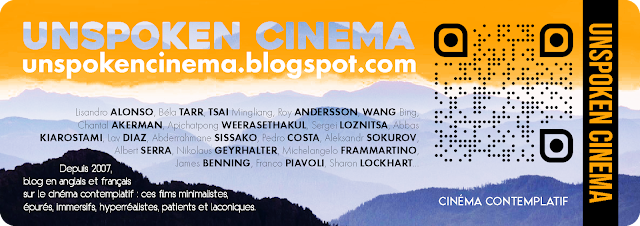Goodbye, Dragon Inn and the Power of Slow Cinema (Sawyer Gouw Ranzetta) 29 March 2024 "[..] The shot lingers for longer than you would expect, a staple of Tsai’s style and what one might expect from a film described as slow cinema, an international movement comprised of work from the likes of Michelangelo Antonioni, Andrei Tarkovsky, Chantal Akerman, Béla Tarr, Hou Hsiao-hsien, and Apichatpong Weerasethakul that deal in long takes, wide angles, and fixed shots. Despite paying homage to such a theatrical piece of cinema as Dragon Inn, Goodbye, Dragon Inn’s characters are muted, and its camera is static. Rather than try to recreate the magic of the wuxia film, effectively bridging the gap between past and present, Goodbye, Dragon Inn is obsessed with the chasm between then and now and uses duration as a tool to both attract and alienate viewers. [..] There is a false assumption that if you are an enlightened viewer, slow cinema is riveting which I hope to demystify. Slow cinema is





